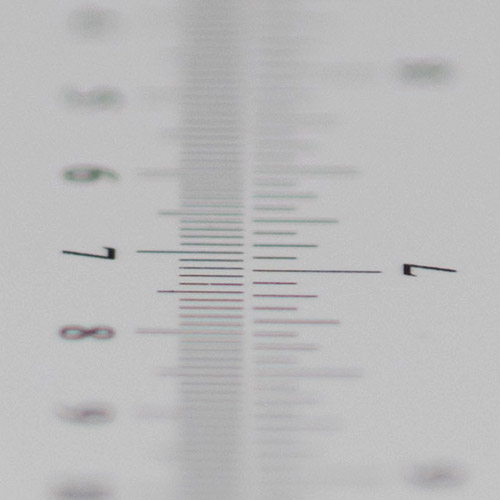|
Zeiss Batis 85mm f/1.8 (Sony) - Review / Test Report - Analysis |
|
Lens Reviews -
Sony Alpha (Full Format)
|
|
Page 2 of 3

Distortion
The image distortion is a bit of mixed bag honestly speaking. The raw distortion is as high as 2% (pincushion style) which is downright disappointing for a medium tele prime lens. However, most users will probably enable image auto-correction anyway and the system manages to bring down the distortion to just 0.4% which is usually not relevant anymore.
Move the mouse cursor across the image for viewing the distortion chart with auto-correction.
Vignetting
The Zeiss Batis 85mm f/1.8 follows an old Zeiss tradition - very high vignetting. At f/1.8 the raw vignetting reaches 2.6EV (f-stops) which is too high in this speed class. Stopping down to f/2.2 reduces this by roughly an f-stop. The issue is acceptably reduced by f/2.8 and good from f/4 onward.
However, again, if you use image auto-correction the really visible vignetting is limited to f/1.8 with a light-falloff of 1.2EV.

MTF (resolution)
The resolution characteristic of the Zeiss lens is nothing short of stellar (at 42 megapixels). The quality is already superb across the frame at f/1.8 - it doesn't really get any better than this. Stopping down doesn't improve the quality anymore (nor is this needed anyway). It is somewhat odd that the resolution figures stay exceedingly high at and beyond f/8. Diffraction effects should have a more deteriorating effect here. We suspect that f/11, as displayed by the camera, is really more like f/8 in the real world (interestingly we have seen this in another Sony 85mm lens as well).
The centering quality of the tested sample was quite good. Field curvature is marginal.
Please note that the MTF results are not directly comparable across the different systems!
Below is a simplified summary of the formal findings. The chart shows line widths per picture height (LW/PH) which can be taken as a measure for sharpness.
If you want to know more about the MTF50 figures you may check out the corresponding Imatest Explanations
Chromatic Aberrations (CAs)
The Zeiss lens produces a low amount of lateral CA (color shadows at harsh contrast transitions) around 0.7px on the average at the image borders. This is usually nothing to worry about.

Bokeh
The quality of the out-of-focus blur - aka bokeh - is about as important as the sheer sharpness in this lens class. The Zeiss lens doesn't disappoint here although there's a bit room for improvement.
Out-of-focus highlights are nicely rendered at f/1.8. The highlight discs are smooth, albeit not perfectly, and without any noticeable outlining effect. The circular disc shape deteriorates fairly early though. You may notice traces of an "edgy" aperture at f/2.2 already (see below).
 The circular discs dissolve to ellipsoid shapes near the borders. This is quite normal and it can be reduced by stopping down.
The circular discs dissolve to ellipsoid shapes near the borders. This is quite normal and it can be reduced by stopping down.
 The general blur in the difficult focus transition zone is very good but, again, not perfect. You may notice that e.g. the "crown" in the background image (to the left below) is somewhat busy if we are nit-picky here. The foreground zone (to the right below) is very smooth though.
The general blur in the difficult focus transition zone is very good but, again, not perfect. You may notice that e.g. the "crown" in the background image (to the left below) is somewhat busy if we are nit-picky here. The foreground zone (to the right below) is very smooth though.

Bokeh Fringing
So-called bokeh fringing is an effect that occurs around the focus point (on the Z-axis). It's visible as halos of different colors in out-of-focus areas - magenta (red + blue) in front of the focus point and green beyond.
Unfortunately, the Zeiss Batis 85mm f/1.8 isn't designed to correct this defect. The color fringing is visible from f/1.8 to f/4.
If you traverse through the aperture range below, you will also observe that the focus remains static (thus no residual spherical aberrations).
|
Move the mouse cursor over the f-stop marks below to observe the respective LoCAs
|
| f/1.8 |
f/2.2 |
f/2.8 |
f/4 |
|

|
|